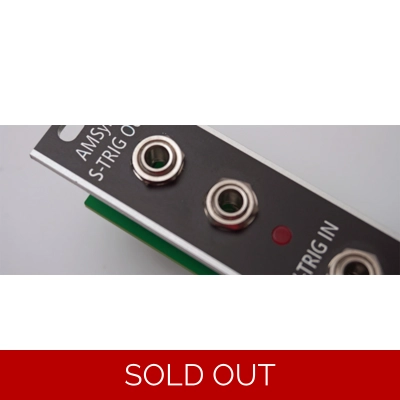AM928 Sample & Hold
12 HP Module | AM928 Sample & Hold | User Manual (PDF) | Modular Grid
OVERVIEW This is a recreation of the Moog 928 Sample and Hold module. The Moog Modular synthesizers were launched in the 1960's without a sample and hold circuit, and only when ARP popularized this circuit in the 2600 and Odyssey did Moog introduce one, around 1975.
DESCRIPTION The Moog circuit is different to the ARP design, as it uses CMOS analog switches rather that a JFET to sample the input signal. It has two signal inputs for sampling sources; the X1 input provides unity gain and the X3 provides three times gain. There are two identical outputs.
A precision low frequency clock can be used as the sampling source (INT) or a V-trigger and S-trigger inputs (EXT). The square and triangle outputs of the clock are available on the front panel with a green LED indicating the internal clock rate.
The module has potentiometers for the internal clock rate and glide rate, and a slide switch to select the internal or an external clock source patched into the S or V-Trigger Inputs. There is also a slide switch to bypass the glide circuit to provide sharp waveform outputs.
The module is designed to complement the Behringer System 55 Modular System and is designed specifically for the lower signal levels that it uses. This module is not suitable for standard Eurorack signals levels.
CONNECTIONS There are nine 3.5 mm jack sockets on the front panel:
- 2x audio inputs
- 2x audio output
- V-Trig and S-trig inputs
- S-Trig Output
- 2x clock outputs (Pulse, Triangle)
The module comes with a set of M3 mounting screws and washers, and a standard Doepfer power cable.
2024 Edition The AM928 module was re-released in 2024 with an improved aluminum panel with etched sides and lettering. The circuit remains the same but has been 90% implemented with SMD components to reduce costs.
MODULE STATUS: PRODUCTION

No Reviews Posted Yet - be the first!
write review




